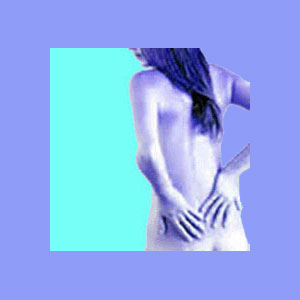
Sciatica tight muscles can occur in the lower back, buttocks, thighs, calves or feet. Tight muscles, also called muscular tension or stiff muscles, can be a sign of anatomically-sourced sciatic nerve pain. However, some muscular tightness is perceived, more than actual, and sourced through the process of oxygen deprivation, not any spinal causation. In yet other instances, tightness can be the direct result of a localized muscular condition or injury in the affected site and may coincidental to any spinal issue which may have been diagnosed.
This editorial takes a look at chronic muscular tension and how it may be related to sciatica symptoms. We will examine several possible reasons why tight muscles may exist in patients who suffer from sciatic nerve expressions.
Sciatica Tight Muscles in the Back and Buttocks
The nerve roots implicated in causing sciatica include the L4, L5, S1, S2 and S3. These neurological structures serve the sensory and motor requirements of the legs and much of the lower body region. Pinched nerve roots in the spine can sometimes occur due to a herniated disc, osteophyte or spinal curvature disorder, such as scoliosis, kyphosis or lordosis. This process is known as foraminal stenosis or foraminal misalignment, depending on the source process. While the diagnostic conclusion is common, clinical proof of nerve root compression is rarely achieved and the symptoms often do not correspond to the diagnostic theory.
Sciatica due to oxygen deprivation is a sometimes a more logical explanation for long-term back and leg pain, since it is a regional process and unlikely to respond to traditional sciatica treatments.
Both nerve compression and ischemia can enact that tight and tense feeling in the surrounding musculature, making life a difficult torment to endure.
Tight Muscles in the Legs and Feet
Tight muscles in the legs and feet can also be the result of foraminal stenosis, especially if the actual symptomatic expression matches the suspected nerve root involved exactly. However, once again, a great number of chronic sciatica conditions which have not responded well to seemingly appropriate medical care are mistakenly diagnosed.
These cases can also be oxygen deprivation issues and it is of no surprise that affected patients often compare their pain to leg cramps or charley horses. This is due to the identical causative mechanism between these various conditions: ischemia.
A good number of sufferers find their leg cramps and tightness are worse when lying down, especially in certain positions. This may be caused by psychological conditioning and/or the mere fact that a horizontal position, combined with a relaxed heart rate, both reduce blood flow to the legs and feet, escalating symptoms and making quiet time a real nightmare.
As previously mentioned, some patients have local nerve damage, muscular injury or other problems which can cause chronic tightness in a specific area of the leg or foot. In many of these patients, coincidental spinal conditions, such as lumbar herniations, may also exist. While the localized condition may truly be responsible for causing the symptoms, the spinal irregularity may be unfairly implicated.
Be very wary of pursuing drastic treatment for any spinal source if you have a history of local injury to the now chronically tight anatomical site.
Discomfort from Sciatica Tight Muscles
I know how uncomfortable that tight, stiff muscular feeling can be. I suffered from it for so many years. I especially experienced it in the outer aspect of the buttocks and into the rear of the hips. My neck was almost always practically frozen with chronic tightness.
If you are suffering from ongoing or recurrent muscular tightness blamed on a specific spinal cause, but have not found lasting relief, then a second opinion and wider diagnostic evaluation might be smart. Inaccurate diagnostic practices cause more patients needless suffering than any other reason.
Additionally, you might want to research ischemia as the possible source of tightness, since this is one of the most prevalent explanations for unrelenting and unresponsive sciatica.





